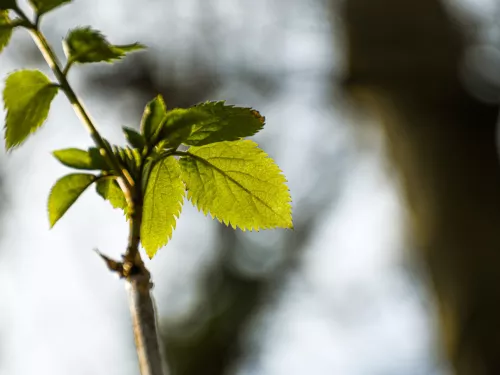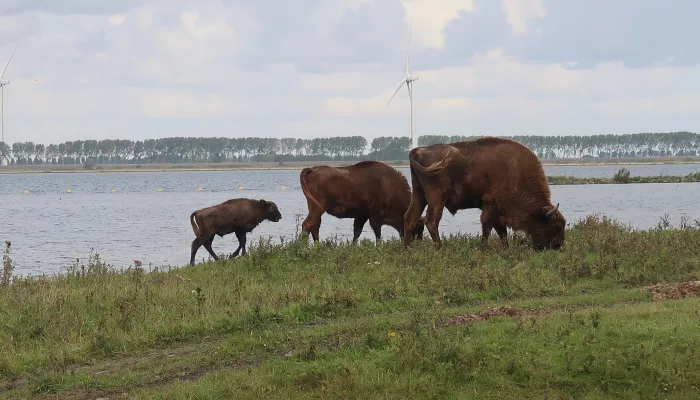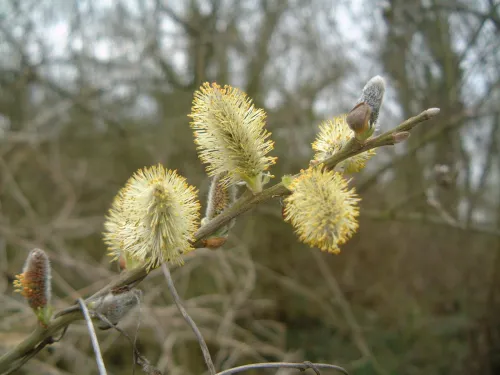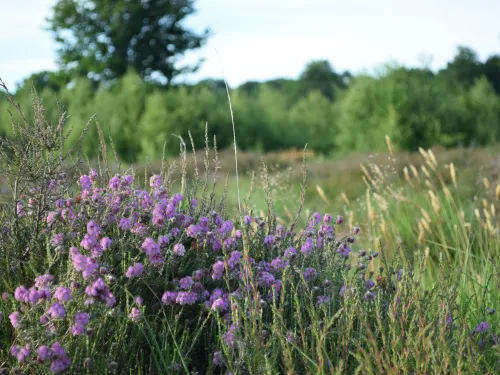
Spring on the wing: April on Hothfield Heathlands
Hothfield Heathlands volunteer & writer, Margery Thomas, explores what the reserve is like at this time of year.

Sally Smith
It is hard to believe that 12 months have passed since staff at Kent Wildlife Trust and Wildwood Trust stood alongside the world’s media and watched three European bison take their first tentative steps into West Blean and Thornden Woods on a day when temperatures soared over 40 degrees.
Within hours of roaming the woods, the herd had already made their mark, the matriarch thrashed her horns through a thicket of rhododendron and emerged from the vegetation wearing it as a crown. The rangers wondered if her actions were an attempt to cover herself in the plant’s oils as a fly repellent.
Then came the dust-bathing, de-barking and stomping of thick vegetation. Bison corridors began to open up, light reached parts of the Blean that had been in darkness for years and areas of brambles, that would have taken our amazing volunteers months to clear, were cleared in just days.
Dung-beetle larvae was found in the bison droppings and fungi grew from them too. Despite the bison only being resident for a short space of time, an explosion of biodiversity was clear to be seen.
The herd is remarkably clever, in their previous homes they were not privy to woodlands, but it did not stop them from figuring out the best way to forage and bend branches so they could feast on the hard-to-reach tasty parts of trees.
A phone call from one of the researchers examining the faecal samples raised some questions about the possibility of bison self-medicating. On her arrival, the matriarch had a high parasitic load but within weeks this had dropped considerably. The rangers had noted she had been targeting yew tree, which contains toxins, and led staff to question if this was intentional to rid herself of those pesky parasites.
In September, the nation delighted as the UK’s first wild bison calf in thousands of years was born free, she will only ever know the Blean and will learn all the best places to forage, passing that knowledge onto the generations who follow her.
Finally, the family was completed when the bull from Germany arrived in a deluge of rain. He has bonded with the herd and the rangers will be keeping an eagle eye on them in the hope of hearing the pitter-patter of tiny hooves next year.
With the arrival of Iron-Age pigs, Exmoor ponies and Longhorn cattle in March, the grazing assemblage of animals in the woodland is complete. Visitors to the Blean have been excited to spot them as they wander the trails, with some lucky walkers spotting the elusive bison too.
We now need to sit back and let nature take its course. The animals will change the shape of the Blean, creating a mosaic of habitats and opening up rides and glades as they go about their ‘wilding business.’
The monitoring programme is in full swing with vegetation studies, invertebrate counts and soil sampling just some of the many areas being scrutinised. It is an incredibly exciting time and we eagerly anticipate the results of these studies.
Whilst it has only been a year, we have already seen so much action and it is fair to say the story is only just beginning.
If you'd like to support the future bison herd, you can join others who have sponsored a bison bridge. Our bison bridges are the next stage of the Wilder Blean project and you can learn more about them here.

Hothfield Heathlands volunteer & writer, Margery Thomas, explores what the reserve is like at this time of year.

Long-time volunteer, Margery Thomas, tells all about March on our Hothfield Heathland reserve!

Ashford Area Warden Will Glasson reflects on his first full year working across the local sites in this blog, co-written with long-time volunteer Margery Thomas.